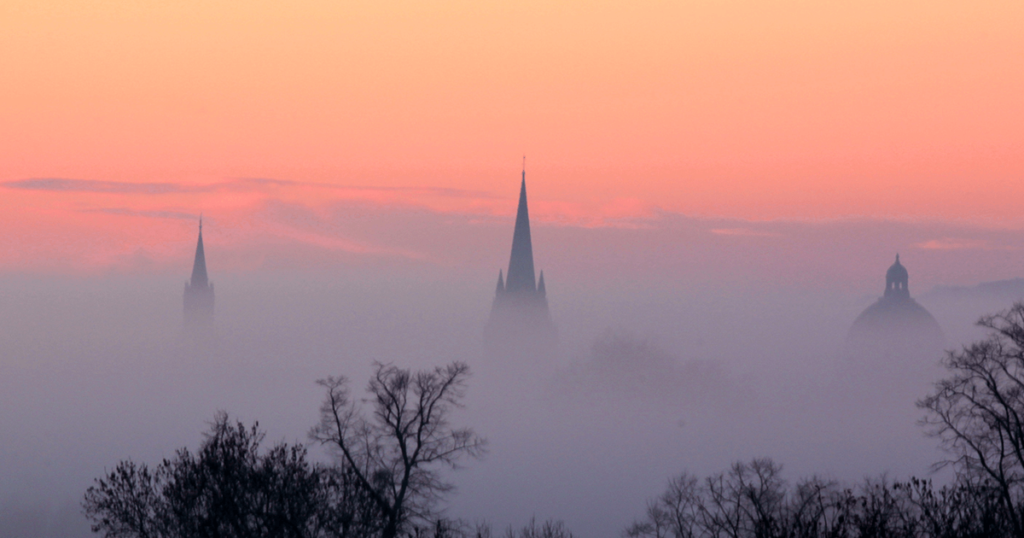
The morning was another foggy one, the mass of gray thinning as I jogged through it. But at the brink of the hill where I stopped to view the parishes of Cabueñes and Somió, spread out below and melding with the city of Gijón, sitting at ocean’s edge, I saw nothing but fog, thick billows of it all the way to the mountains on the far side. No houses on the hillside, no road winding between them, no church or cemetery, no grammar school at the head of the valley, no engineering school, no orchards or fields, no hospital and no technological park beside it, no streets, yards, or trees—everything gone, including the buildings of Gijón and the water beyond. Vanished. Instead was this sea of cloud, deep and still, and from the middle, the top of the tower at the Universidad Laboral and its spire, rising into a clear blue sky. Nothing else. Nothing moved.
I didn’t move either, looking out over the flooded valley, fog lying thick almost to where I stood. In Spanish, fog is called niebla, though in Asturias there’s another word it goes by, bruma, which is the fog that comes particularly from the sea. In 20-plus years here on the foggy edge of the continent, I have seen lots of it. Wispy fog, thick rolling fog, lifting fog—all of that, sometimes clawing its way across my field and sometimes leaping from hillock to hillock in a hurry, sometimes emerging from the woods below the house and creeping toward us as if on a mission, or limping along on higher ground in tattered legions. But never before this heavy and still gray cover under an open sky that I gazed on, the spire of La Laboral poking from it.
Built around a courtyard with a church and theatre, La Laboral is enormous, grand, and imposing, sometimes likened to El Escorial Palace, near Madrid. No feasting in these halls though, no tutors bowing to princely pupils in the chambers here. Undertaken after a mining accident in the mid-1940s and conceived as an orphanage for miners’ children, the building when completed 10 years later was used principally as a school. Refurbished at the beginning of this century, it now houses an art center and a music school, among other institutions. It is the biggest building in Spain, and the tallest stone construction in the country. In Asturias, it’s the tallest building, period. That morning, though, it was more than the tallest; it was the only one.
I considered returning to the house, 10 minutes behind me, for a camera, but 20 minutes hence would the scene still await me? Would it be the same on a screen? The fog was so close it appeared to start at my feet. Were I to capture a likeness, would it be as astonishing as this unexpected view tugging at my toes? I couldn’t turn away without tearing at the bottom edges and dragging remnants behind me. So instead I stepped into it.

